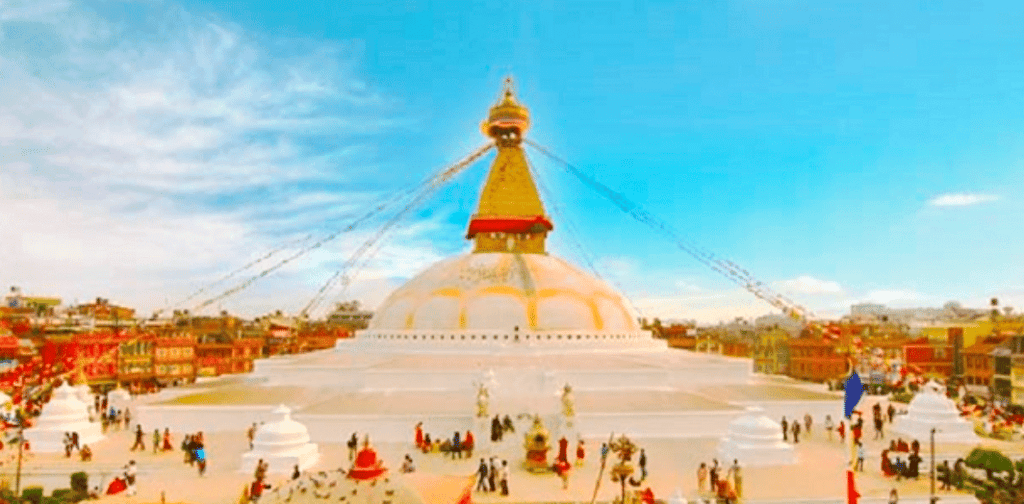Class 9 English Chapter 8 Question Answers - Kathmandu
Q1. How does the author describe the flute seller? What does he say about the flute music?
Ans: The author encounters a flute seller in a corner of the square near his hotel. He holds a pole with an attachment at the top, from which about fifty or sixty flutes are displayed, protruding in all directions like the quills of a porcupine. These flutes are made of bamboo and include various types such as cross-flutes and recorders. Occasionally, he stands the pole on the ground, selects a flute, and plays it for a few minutes. The sound rises clearly above the noise of traffic and the cries of hawkers. He plays slowly and thoughtfully, without shouting about his wares. Although he makes an occasional sale, his attitude remains carefree, suggesting this has been his way of life for years. The author finds it hard to leave, as he has always been drawn to flute music. He notes that the flute is a common instrument across cultures, serving as a link among all of humanity.
Q2. Compare and contrast the atmosphere in and around the Baudhnath shrine with that in the Pashupatinath Temple.
Ans: The Pashupatinath Temple and the Baudhnath Stupa offer very different experiences. The Pashupatinath Temple is crowded and lively, filled with worshippers trying to get close to the priest and the deity. The scene is chaotic, with priests, vendors, devotees, and tourists moving about, along with animals like cows, dogs, and monkeys. The noise and activity make the place feel disorderly, especially when Western visitors attempt to enter, adding to the commotion.
In contrast, the Baudhnath stupa is peaceful and calm. Although Tibetan-run shops line the road around it, the atmosphere remains quiet and still. The author describes it as a place of peace, offering a break from the busy streets. Unlike the bustling Pashupatinath Temple, the Baudhnath stupa provides a quiet space for reflection and serenity.

Q3. How does the author describe Kathmandu’s busiest streets?
Ans: The author describes Kathmandu's busiest streets as vivid, mercenary, and religious. The landscape is beautiful and lively, filled with constant religious activity. Notable sites like the Pashupatinath temple and the Baudhnath stupa coexist with numerous small shrines and deities. The streets are mercenary due to the thriving tourist trade, featuring narrow pathways bustling with fruit sellers, flute vendors, and hawkers offering postcards. Shops line the streets, selling a variety of items such as Western cosmetics, film rolls, chocolates, and traditional Nepalese antiques like copper pots. The atmosphere is filled with a cacophony of sounds: radios blaring film songs, car horns honking, bicycle bells ringing, and vendors calling out to attract customers. Additionally, the lowing of cows adds to the din as they react to the noise of passing motorcycles. Overall, Kathmandu's streets are a vibrant mix of noise and activity.
Q4. “To hear any flute is to be drawn into the commonality of all mankind.” Why does the author say this?
Ans: The author reflects on the music of a flute played by a seller in a square near his hotel in Kathmandu. This experience reminds him of the many types of flutes found in different cultures. The flute is a universal instrument, present in nearly every culture, each with its unique tone and pitch. For instance, the Japanese shakuhachi and the Indian bansuri have distinct fingering techniques and sound ranges. The Indian bansuri produces a deep sound, while South American flutes create clear, breathy tones, and Chinese flutes deliver loud, high-pitched melodies. Despite these differences, the author notes that the music from all flutes closely resembles the human voice. Each flute requires pauses and breaths, akin to how we speak in phrases and sentences. These pauses are created by the fingering of the flute's holes. This shared characteristic evokes a sense of being drawn into the commonality of mankind, instilling a feeling of universality and harmony.
Q5. What ideas do you get about the author from the extract “Kathmandu”?
Ans: The extract “Kathmandu” from Vikram Seth’s travelogue, ‘Heavenly Lake’, reveals several aspects of his personality. As a traveller, Seth demonstrates a strong sense of observation, vividly capturing the essence of Kathmandu’s temples and bustling streets. His descriptions bring these places to life, showcasing his fine aesthetic sense. Indirectly, he expresses a love for serenity when he describes the stupa as a ‘haven of quietness’. Additionally, Seth’s environmental awareness is evident as he critiques the pollution along the Bagmati river. His passion for travel shines through, as he considers taking a longer route back to Delhi despite feeling tired. Seth’s appreciation for music is highlighted when he becomes enchanted by the sound of a flute, reluctant to leave the square where it is played. His reading preferences also reflect his personality; when fatigued, he opts for light, popular literature. Like many travellers, he indulges in local delicacies found in Kathmandu’s bazaars. Overall, Vikram Seth emerges as a person with a deep love for travel, a passion for music, a keen observer, and a reflective mind, capable of portraying places and people with remarkable detail.
Q6. The author has drawn powerful images and pictures. Pick out three examples each of
(i) the atmosphere of febrile confusion outside the temple of Pashupatinath
(ii) the things he sees
(iii) the sounds he hears
Ans: (i) Some examples of the atmosphere of ‘febrile confusion’ outside the Pashupatinath Temple:
- A huge crowd outside the temple that includes human beings, animals and birds
- Some Westerners in the saffron attire like Hindus trying to intrude into the temple and the policeman opposing them
- Two monkeys fighting, one chasing the other and jumping on a Shivalinga and then running to the river Bagmati
(ii) Some examples of the things that the writer sees:
- Women washing clothes on the banks of Bagmati river
- Children bathing in the river
- A corpse being cremated at the banks of the Bagmati
- A basket with withered flowers, leaves and old offerings being dropped into the river
- The Tibetan immigrants selling things on the road around the Baudhnath stupa
- The hawkers selling the postcards and other wares in the streets
(iii) Some examples of the sounds that the writer hears:
- The blaring horns of the traffic
- The sweet and hypnotic sounds of the flute
- The loud voices of the hawkers.
- The mooing of stray cows
- The film songs blaring out from the radios
- The sound of car horns
- The ringing of bicycle bells
Q7. Where does the author find the flute seller and what are his observations about him? What draws the author to the music of the flute?
Ans: The author discovers a flute seller in a corner of the square near his hotel in Kathmandu, amidst various other hawkers. Unlike the other vendors, the flute seller does not shout to attract customers or display any desperation to sell. He carries a pole with about fifty to sixty flutes attached at the top, which protrude in all directions, resembling the sharp quills of a porcupine. Most of these flutes are bamboo varieties, including cross-flutes and recorders. Instead of hawking loudly, he places the pole on the ground at intervals, selects a flute, and plays it slowly and meditatively. The sound of the flute is distinct and clear, rising above the noise of traffic and the cries of other hawkers. Although he does not seem to run a brisk business, it appears that playing the flute is his primary activity, with selling the flutes being incidental. The author is captivated by the mesmerising music of the flute, feeling spellbound by its hypnotic notes. The experience is so profound that he struggles to leave the square, and the music remains etched in his memory, accompanying him back to India.
|
120 videos|624 docs|82 tests
|
FAQs on Class 9 English Chapter 8 Question Answers - Kathmandu
| 1. काठमाडौँको प्रमुख आकर्षण के के हुन् ? |  |
| 2. काठमाडौँमा कसरी यात्रा गर्ने ? |  |
| 3. काठमाडौँको मौसम कस्तो हुन्छ ? |  |
| 4. काठमाडौँमा हुँदा कुन विशेष चिजहरू खरीद गर्न सकिन्छ ? |  |
| 5. काठमाडौँमा खानाका लागि के के सिफारिश गरिन्छ ? |  |

















